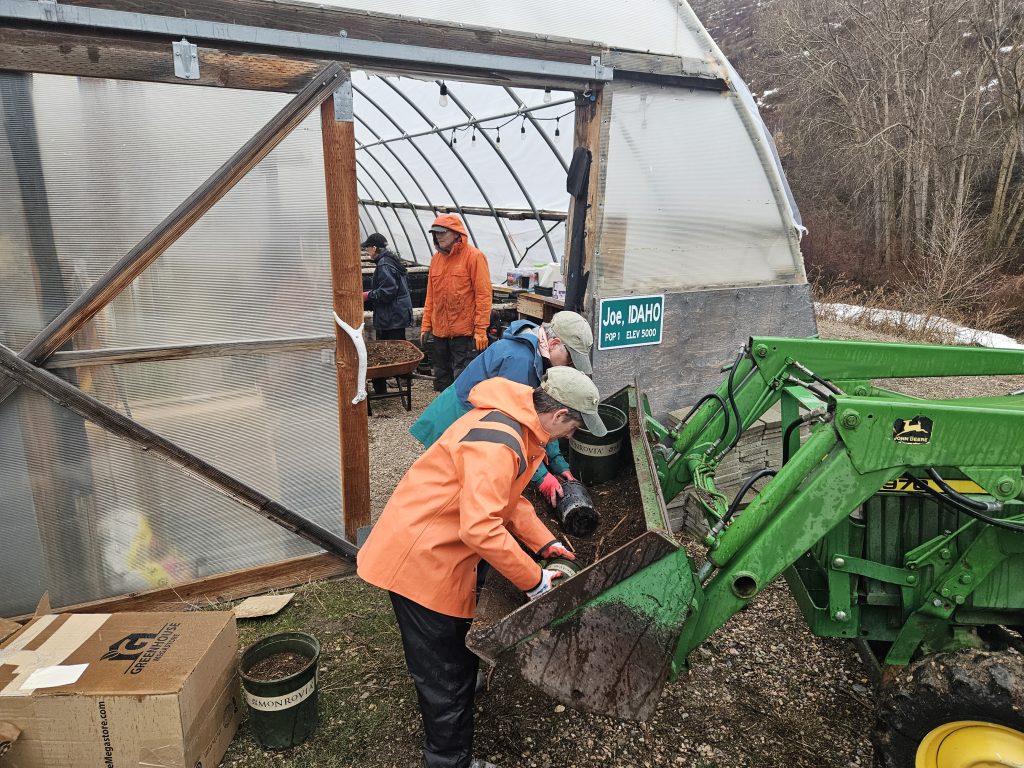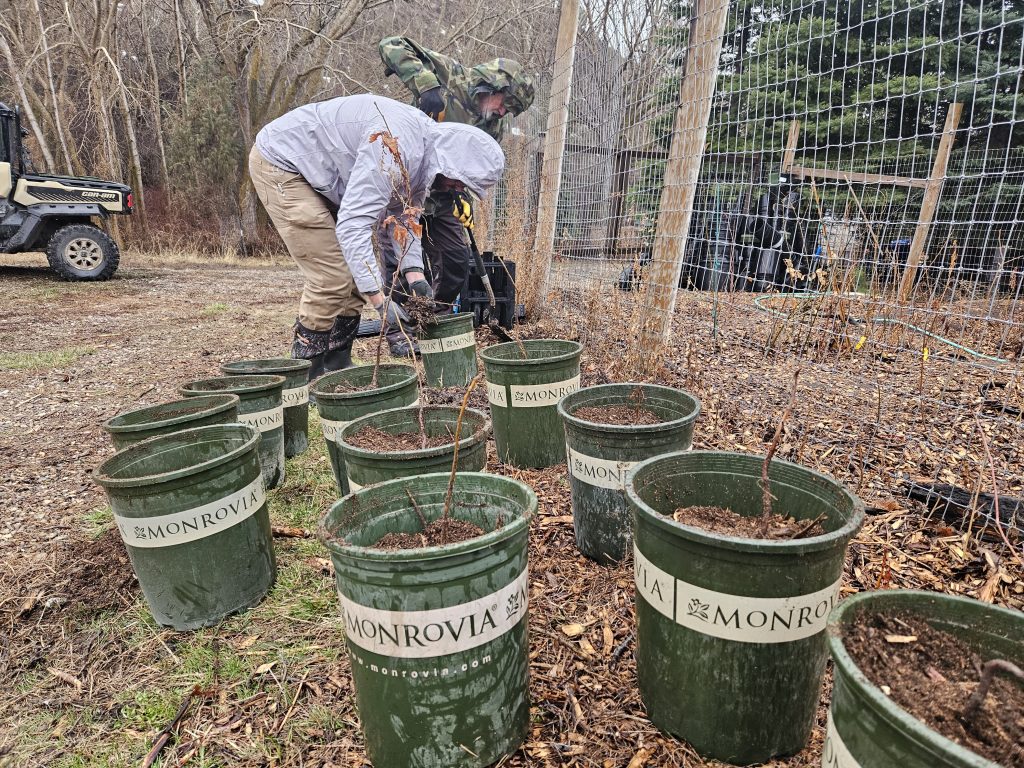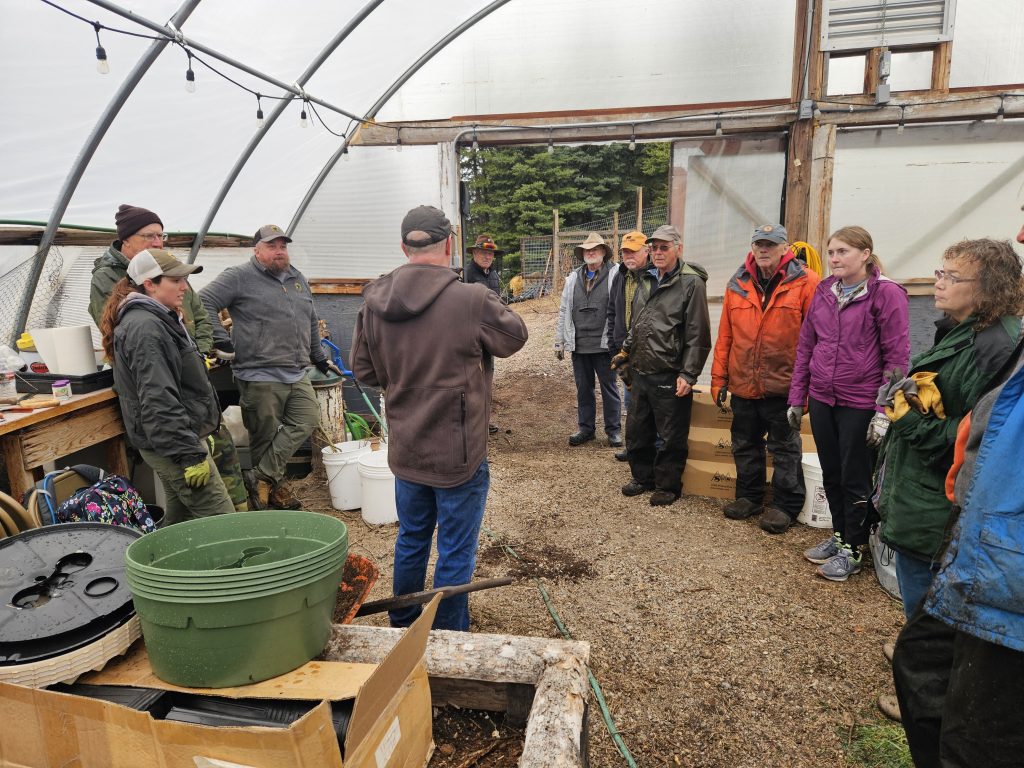Planting for the Future
Despite cold rain and falling snow, a determined group of volunteers in southeastern Idaho rolled up their sleeves to pot more than 1,000 locally sourced trees and shrubs — efforts that will play a crucial role in habitat improvement projects across the region.
Joe Foster, president of the Idaho NWTF State Chapter, alongside a team of dedicated volunteers, oversees a greenhouse and tree yard supplying trees for Idaho Fish and Game conservation projects. These projects are essential for maintaining healthy wildlife habitats on public lands, benefiting both the diverse species that call these areas home and the recreational enthusiasts who enjoy them.
On the planting day, volunteers with the NWTF, the High Desert Master Naturalists, Sagebrush Steppe Land Trust and Idaho Fish and Game staff worked together to propagate cottonwoods and hawthorn, pot oak saplings from last year’s efforts, and plant hundreds more acorns.


“This group continues to grow in size and scope,” Foster said. “Our efforts will result in thousands of plantings on habitat projects throughout southern Idaho.”
In just a few hours of work, their collective efforts contributed approximately $30,000 worth of trees and shrubs to future habitat restoration projects. This volunteer work allows Idaho Fish and Game to scale up their conservation impact far beyond what would be possible with state resources alone.
“As habitat biologists, our goal is to restore landscapes for wildlife,” said Jason Beck, Idaho Fish and Game regional wildlife habitat biologist. “Finding native and locally sourced trees and shrubs for these projects is often a challenge. This partnership with the NWTF Southeast Idaho Chapter has been instrumental in helping us source the right vegetation.”
The newly potted trees will spend time in a 50-by-50-foot tree yard — originally built with the help of Eagle Scout projects — where they will be carefully monitored and acclimated to southeastern Idaho’s climate and soil conditions before being transplanted later in the year to various public lands.
Once ready, volunteers and Idaho Fish and Game staff will plant these trees throughout the region, enhancing habitats for wild turkeys and a variety of other wildlife. Trees and shrubs are essential to turkey habitats, providing food, nesting sites, cover and shelter. However, southeastern Idaho’s arid climate and limited rainfall make it difficult for many species of trees and shrubs to thrive naturally, leading to suboptimal habitat conditions.
To improve survival rates, transplanted trees are placed in specially designed water boxes, an innovative self-watering system that retains moisture and sustains young trees.

“This technology supports trees to survive in difficult circumstances without using groundwater or electricity,” Foster said. “It collects rainwater and catches condensation. The boxes are initially filled with about 5 gallons of water, which is distributed over an extended period. The water boxes provide a weed barrier, steadies temperature at root level stimulating capillary formation in the soil, prevents evaporation of groundwater and helps prevent damage from rodents. A dedicated “plant guzzler” if you will.”
Since the launch of this collaborative effort, the NWTF, Idaho Fish and Game and other conservation partners have planted more than 10,000 trees and shrubs across southeastern Idaho. Thanks to the use of water boxes, their one-year plant survival rate has skyrocketed from around 20% to more than 80%.
While the work is ongoing, one thing is certain — these habitat improvements wouldn’t be possible without the dedication of volunteers and conservation-minded organizations. In southeastern Idaho, NWTF, Idaho Fish and Game and local community members continue to work hand-in-hand to secure a future where wildlife and outdoor traditions continue to thrive.
